Getting stuck in 4-wheel drive low can be one of the most frustrating experiences for Ford F-150 owners. This issue mainly affected models from 2004 to 2008, though it could also occur in other years. While 4WD Low is an essential feature designed to provide maximum torque and traction in challenging conditions, becoming trapped in this mode can turn an ordinary drive into a concerning situation.
Understanding why this happens is the first step toward prevention and resolution. The most common causes range from simple electrical issues to more complex mechanical problems, and knowing the difference can save you both time and money in repairs.
How the 4WD System Works in a Ford F-150
The Ford F-150 uses a part-time 4WD system, allowing the driver to switch between two-wheel drive (2WD) and four-wheel drive (4WD) modes as needed. This system includes:
1. 2H (2-Wheel Drive High):
- In this mode, the power is sent only to the rear wheels.
- It is ideal for everyday driving on dry, paved roads.
- Provides better fuel efficiency because only two wheels are being driven.
2. 4H (4-Wheel Drive High):
- This mode engages all four wheels, distributing power between the front and rear axles.
- Suitable for driving on slippery surfaces like snow, mud, or gravel.
- It provides better traction but may reduce fuel efficiency compared to 2H.
3. 4L (4-Wheel Drive Low):
- Engages all four wheels with a lower gear ratio, delivering maximum torque.
- It is ideal for off-road conditions, steep inclines, or when towing heavy loads.
- This mode should be used only at low speeds due to the high torque output.
4. 4A (4-Wheel Drive Automatic):
- Automatically switches between 2WD and 4WD based on road conditions.
- It provides the convenience of automatic engagement, making it suitable for changing terrains.
5. Electronic Shift-on-the-Fly (ESOF):
- The F-150’s 4WD system often features ESOF, allowing the driver to switch between modes using a rotary dial on the dashboard without stopping the vehicle (up to certain speeds).
- Transitioning between different driving conditions is seamless and convenient.
6. Locking Rear Differential:
Some Ford F-150 models come with a locking rear differential, which locks the rear wheels together, ensuring both wheels spin at the same speed for maximum traction in difficult conditions.
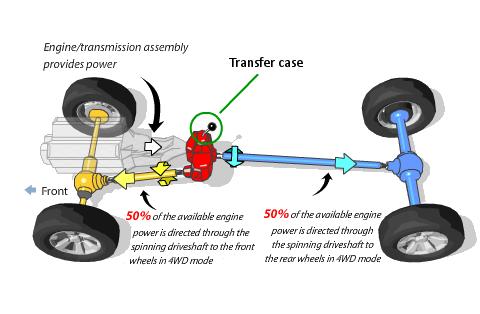
Understanding the Transfer Case Motor
The transfer case motor is the primary control center for your truck’s 4WD operations. This component seamlessly manages the transition between different drive modes when functioning correctly. However, your F-150 can become permanently stuck in 4WD Low when it fails.
A malfunctioning transfer case motor often announces itself through several warning signs. You might notice that gear shifts become increasingly unresponsive or there’s a significant delay when attempting to change drive modes. Some owners report hearing unusual noises during shifting attempts, while others notice their dashboard warning lights illuminating unexpectedly.
Replacing a transfer case motor is one of the more expensive repairs, typically costing between $500 and $800 for the part alone. Professional installation can add another $150 to $200 to the total cost, with the entire repair process usually taking between one to two hours in a professional shop.
Broken Electronic Switches
The modern F-150 relies heavily on electronic switches to control its 4WD system. While generally reliable, these switches can deteriorate over time due to various factors. Moisture intrusion often leads to corrosion, while regular use eventually results in natural wear and tear. Electrical system problems or physical damage can sometimes render these switches inoperative.
Switch failures are particularly troublesome because they may appear to function normally while failing to communicate properly with the transfer case. The good news is that switch replacement is relatively affordable, with new parts typically costing between $50 and $150, making this one of the more economical fixes for 4WD issues.
Lack of lubrication
Proper lubrication of the transfer case is crucial for smooth 4WD operation. The entire system can become compromised when lubricant levels drop or the fluid quality degrades. The first signs often include unusual noises – grinding sounds during shifts, persistent humming, or whining noises that seem to follow your speed.
Insufficient lubrication creates excessive friction within the transfer case components, leading to binding and, ultimately, system failure. Regular maintenance is key to preventing these issues. The transfer case fluid should be checked every 30,000 miles, though more frequent inspections are recommended for vehicles regularly used in challenging conditions.
Vacuum System Problems
The vacuum system plays a vital but often overlooked role in 4WD operation. This system can leave your truck stuck in 4WD Low when it develops problems. Vacuum issues typically stem from leaking lines, damaged seals, or clogged ports within the system. The complexity of modern vacuum systems means that a single small leak can affect the entire 4WD engagement process.
A properly functioning vacuum system maintains the necessary pressure differential for smooth engagement and disengagement of 4WD components. When this pressure is compromised, the system may fail to disengage correctly, leaving your truck stuck in its current mode.
Electrical System and Fuse Considerations
The 4WD system depends on a properly functioning 30-amp fuse to operate correctly. When this fuse blows, your truck can be trapped in its last selected position. This situation is often confusing because the dashboard indicators might display incorrect information while the transfer case module loses power.
Replacing a blown fuse is usually a simple and inexpensive fix, but it’s essential to understand why the fuse blew in the first place. Sometimes, a blown fuse indicates more significant electrical problems that need addressing to prevent future issues.
Professional Solutions and DIY Methods
When your F-150 becomes stuck in 4WD Low, several approaches exist to resolve the issue. The first method involves working with the manual hubs and requires patience and careful execution.
Manual hub checking and driving
- Begin by warming up the engine for several minutes, then ensure the manual hubs are in the free position. This positioning is crucial for the success of any disengagement attempt.
- Next, try shifting into 4WD High and driving forward slowly for approximately half a mile. After this distance, come to a complete stop and attempt to shift into 2WD.
- If unsuccessful, slowly reverse the truck for about 15-20 feet while listening for the distinctive click of disengagement.
Transfer case replacement with pedal pressure
The second method focuses on resetting the transfer case through a specific sequence of actions.
- Start with the engine running and the brake pedal firmly pressed.
- Shift into neutral, then apply gentle pressure to the gas pedal – about 25% of full throttle.
- While maintaining this pressure, attempt to shift the 4WD control to 2WD and wait for an audible click.
Maintenance and Long-Term Care
Regular maintenance plays a crucial role in preventing 4WD system issues. The transfer case fluid should be changed per the manufacturer’s recommendations, typically every 30,000 miles. However, this interval might need to be shortened for vehicles frequently used in demanding conditions.
Regular exercise of the 4WD system is equally important. Many problems occur simply because the system sits unused for extended periods. Monthly engagement of the 4WD system, even for short periods, can help maintain proper function and prevent components from binding or sticking.
Model-Specific Considerations
The 2004-2008 F-150 models are particularly prone to 4WD system issues, with a higher incidence of transfer case motor problems and vacuum system failures. In contrast, the 2020-2021 models feature significantly improved electronic systems and more reliable transfer case designs, making them less susceptible to these issues.
Modern F-150s also benefit from enhanced diagnostic capabilities and improved fail-safe features, making it easier to identify and address potential problems before they become serious. However, these advanced systems can sometimes make DIY repairs more challenging, often requiring specialized diagnostic equipment.
Understanding Warning Signs and Taking Action
Being proactive about potential 4WD problems can save significant time and money in the long run. Pay attention to any unusual sounds during engagement or disengagement of the 4WD system. Grinding, clicking, or whining noises often indicate problems that should be addressed promptly.
Similarly, if you notice delays or resistance when shifting between drive modes, these could be early warning signs of impending issues. Addressing these symptoms early can often prevent more serious and costly repairs later.
Emergency Situations and Immediate Solutions
If you find yourself stuck in 4WD Low while away from home or a repair facility, stay calm and methodical in resolving the issue. First, ensure you’re in a safe location to attempt the basic reset procedures. If these don’t work, contact a qualified mechanic specializing in Ford trucks.
Remember that forcing any components or continuing to drive for extended periods while stuck in 4WD Low can cause additional damage to your vehicle’s drivetrain. If you cannot resolve the issue safely, it’s better to have the vehicle towed to a repair facility than to risk causing more extensive damage.

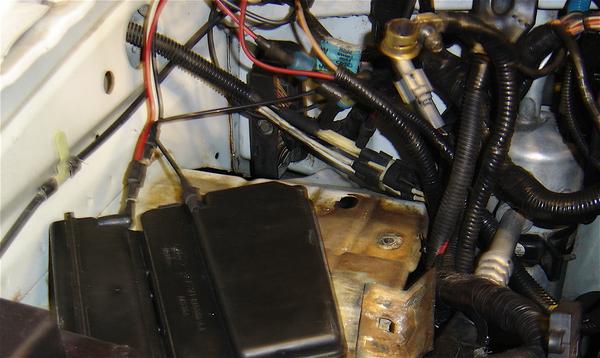

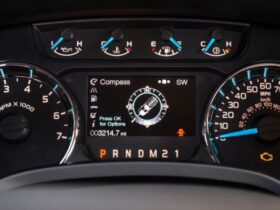
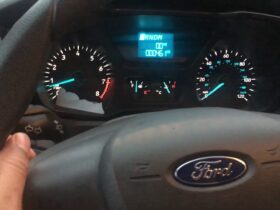
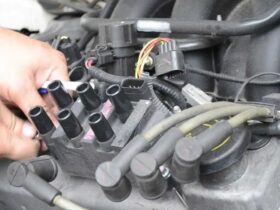
Leave a Reply
View Comments